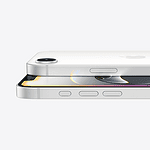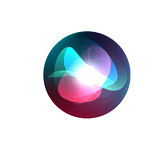The iPhone SE (1st generation) was introduced by Apple in March 2016. This smartphone combined the body of the iPhone 5S with the advanced features of the iPhone 6S. It was well-received for offering modern technology in a smaller, familiar design.
Apple announced the iPhone SE at the “Let us loop you in” event. It featured the A9 processor, the same one used in the iPhone 6S. This made the iPhone SE powerful and efficient while maintaining a compact size.
The iPhone SE also included a 12MP rear camera, delivering high-quality photos. It had 4G LTE, Wi-Fi calling, and other advanced connectivity options. This made it a practical choice for users not needing the largest screen.

iPhone SE Release Dates by Generation
The iPhone SE is a series of budget-friendly smartphones by Apple, offering a mix of performance and affordability. The first generation, simply called the iPhone SE, was released in 2016. It boasted flagship features in a compact design, appealing to those who preferred smaller phones.
iPhone SE (1st generation)
- Announced: March 21, 2016
- Released: March 31, 2016
Features:
- Display: 4-inch Retina display
- Processor: A9 chip
- Camera: 12MP rear camera, 1.2MP front camera
- Storage: 16GB, 64GB
This first iPhone SE was well-received for its powerful performance in a familiar, smaller form factor, making it a popular choice for those who didn’t want larger phones.
| Generation | Announced | Released |
|---|---|---|
| iPhone SE (1st generation) | March 21, 2016 | March 31, 2016 |
Key Takeaways
- The iPhone SE (1st generation) came out in March 2016.
- It had the body of the iPhone 5S and the features of the iPhone 6S.
- It included a 12MP camera and advanced connectivity options.
Design and Specifications
The iPhone SE (1st generation) blends a compact build with capable internal components, making it a notable device in Apple’s lineup. Below are detailed insights on its design and hardware specifications.
Build and Display
The iPhone SE features a 4-inch Retina display. The resolution is 1136 x 640 pixels with a pixel density of 326 ppi. This screen offers a sharp viewing experience despite its small size.
It weighs 113 grams and measures 123.8 x 58.6 x 7.6 mm. This makes the device lightweight and easy to hold.
The back is made of aluminum with a stainless steel frame. Users could choose from four colors: Silver, Gold, Rose Gold, and Space Gray. The phone also includes the Touch ID fingerprint sensor for security.
Internal Components
The iPhone SE is powered by the Apple A9 chip with a dual-core 1.84 GHz Twister CPU. This provides smooth performance for everyday tasks. The GPU is a PowerVR GT7600 (six-core graphics).
The device offers 2 GB of RAM and comes in storage options of 16 GB, 32 GB, 64 GB, and 128 GB.
Battery life is reliable with a non-removable 1,624 mAh battery. It supports up to 14 hours of talk time on 3G and up to 10 days on standby. The phone uses a Lightning connector and has a 3.5 mm headphone jack for audio needs.
Connectivity and Camera
The iPhone SE (1st generation) offers solid connectivity options and a capable camera. Its network compatibility and communication features ensure users stay connected, while its camera allows for decent photos and videos.
Network and Communication
The iPhone SE (1st generation) supports LTE, 4G, and 3G networks, providing fast and reliable mobile data. It uses a Nano-SIM card, making it compatible with many carriers worldwide.
For local connections, it offers Wi-Fi 802.11ac and Bluetooth 4.2. This ensures smooth internet browsing, quick file sharing, and reliable wireless audio.
The device also includes NFC for features like Apple Pay. High-quality GPS connectivity aids in navigation tasks. The Lightning connector allows for charging and data transfer.
Camera Capabilities
The 12-megapixel iSight camera on the iPhone SE (1st generation) captures high-quality photos and videos. It supports 4K video recording at 30fps and 1080p at 60fps, providing clear and detailed footage.
Features like Live Photos, autofocus, and True Tone flash improve picture quality. The front 1.2-megapixel camera is suitable for selfies and FaceTime calls.
The camera software includes options like HDR, panorama, and burst mode. These help users get creative with their photography.






